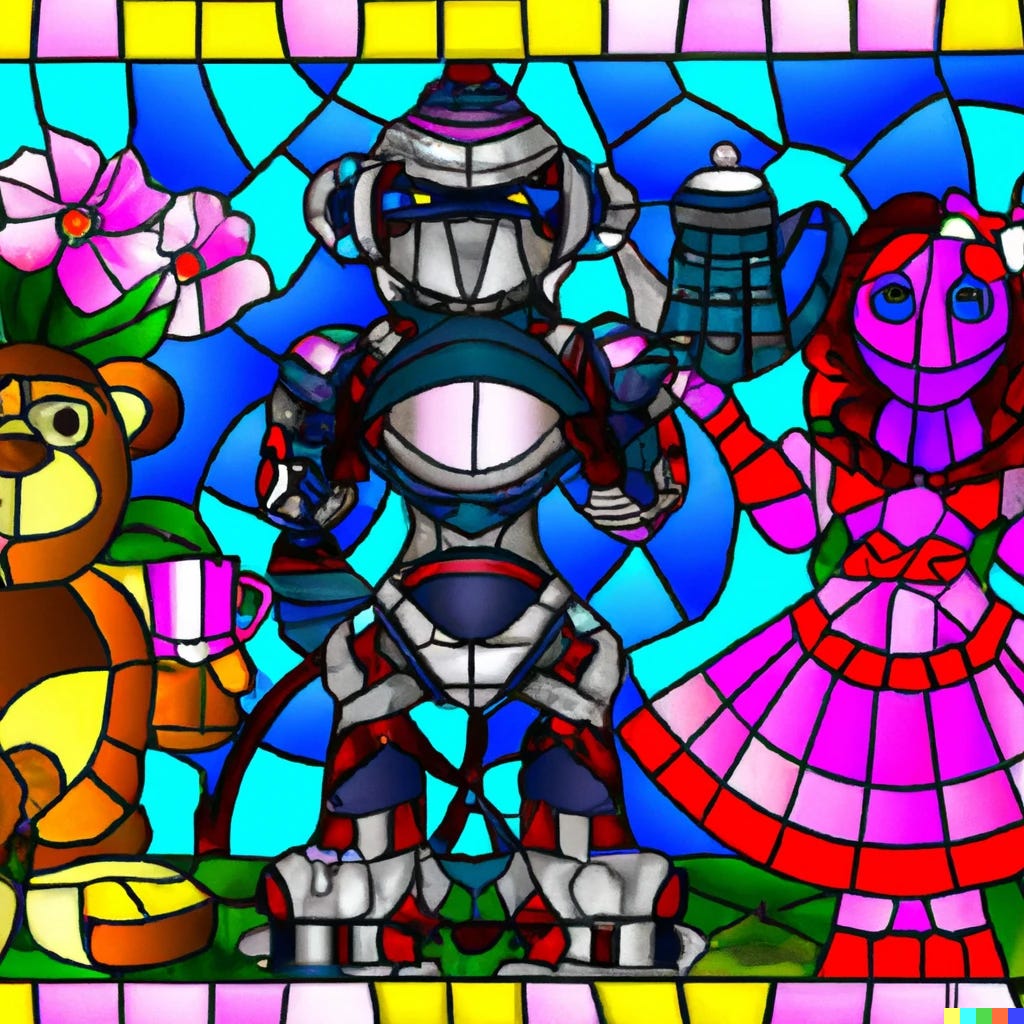The Unknown Unknown
A very merry unbirthday to you
This has been a year where tremendous innovation has challenged our intuitions about knowledge. What is it to know something? We are so sure of our epistemological muscle, but when a system of universal processes encoded in integrated circuitry is capable of writing a research paper or creating novel digital art, it is using statistical inference on large datasets. As computer scientist Larry Tesler said, “AI is whatever hasn’t been done yet.”
Knowledge skepticism is an old philosophical tradition. We won’t replow that field. But what is interesting is what we learn as machines take a different journey to what might only end in domain specific and useful developments or what might lead to creative knowledge. It is also interesting in contrasting this latest bullish AI epoch to the learning styles of a two-year-old human child.
Deep learning can often be simplified to gamifying computation after reviewing large datasets. ChatGPT has reviewed English language essays, novels, lyrics, and poetry and utilizes this to guess the next word of its own compositions in a game of (very rapid) Madlibs. If it is corrected, it updates its neural networks to downgrade the mistake in subsequent iterations. Deep learning algorithms can often do this sort of conjecture and correction without human interaction, setting up what’s called an actor-critic model internally.
Our two-year-old has a shallower but much broader dataset. She is not trained on millions of texts, but understands “gorilla” as not only a word but as a stuffed animal toy, a moving animal on screens and at outings to the zoo, and the sound “oh-oh,” and the cutest chest pounding you have ever seen (the joy that act brings further reinforces the learning)! Creation of imagined worlds where lions, tigers, gorillas, and little girls play with balls or sit for tea parties are fluid, fun, and (exhaustingly) repetitious.
The contrast between these nascent learning mechanisms (if, for the sake of argument, we are allowed to call it that) show off the strengths and weaknesses of each. Pure information processing toyed with in deep learning’s gamification is creative only in the limited capabilities currently available to input the world into a computer... but the centrality of games puts it on the right path. The tact to create in deep learning, by making algorithms into a game of sorts, is an improvement on brute force attempts to “teach” computers.
The more improvements that are made in gamifying domain algorithms and then enhancing the computer’s ability to take a meta step to gamify its own algorithms to improve its creativity in new domains, the more likely that a computer will be invited to a two-year-old’s tea party.


